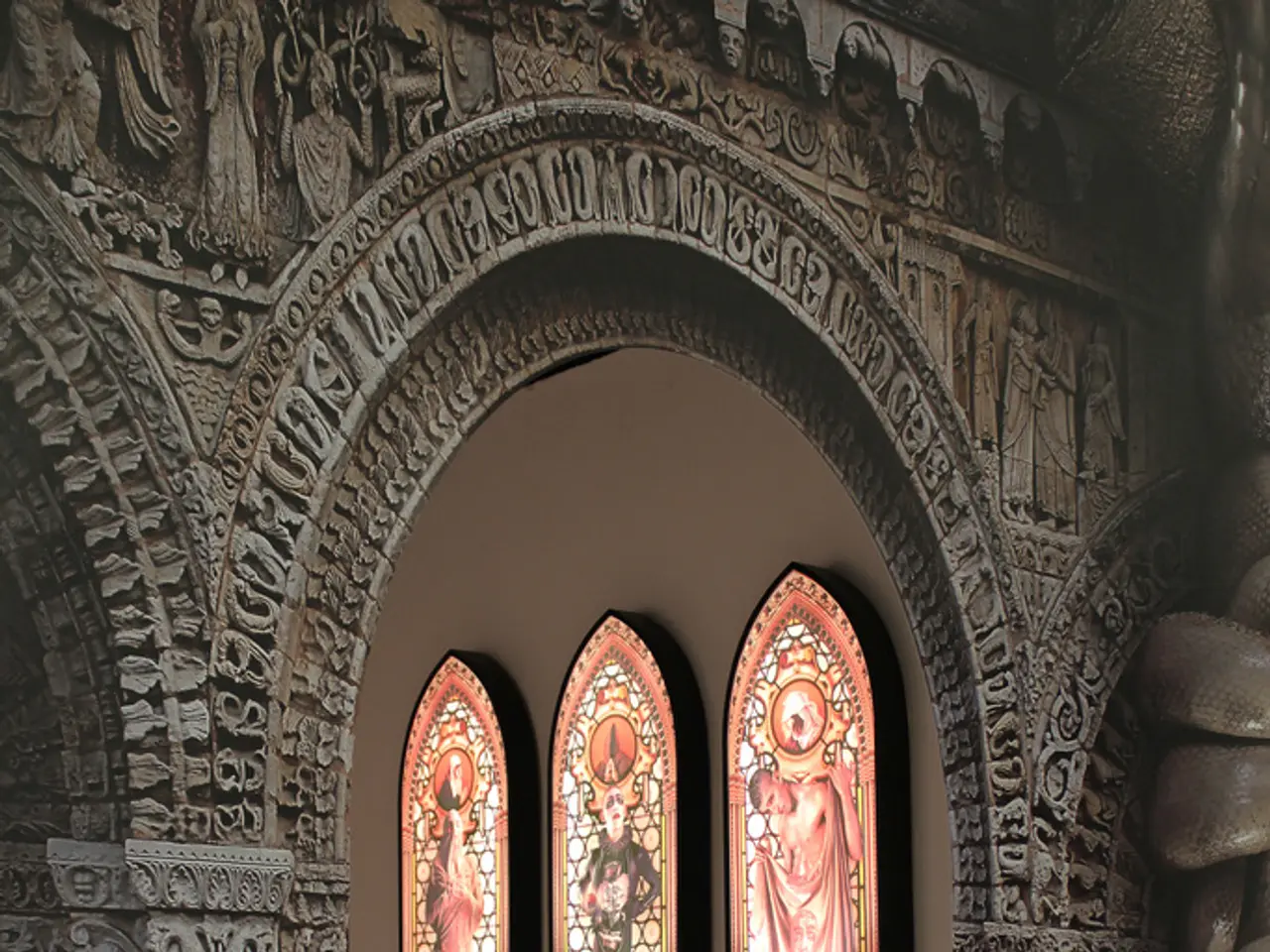Gothic-inspired Home Decor: An Everlasting Aesthetic
In the world of interior design, visionaries craft spaces that are not just functional and comfortable, but visually appealing as well. One such style that continues to captivate homeowners and designers alike is the Gothic Revival interior design.
At its core, Gothic Revival interior design incorporates elements from Gothic architecture, art, and the Romantic movement. This style resurrects the structural and decorative vocabulary of medieval Gothic motifs, emphasising verticality, drama, and intricate ornamentation.
Pointed arches, ribbed vaults, carved columns, stained glass, steep roofs and gables, and ornate detailing are common features in Gothic Revival interiors. These elements draw directly from Gothic architecture, known for its verticality, pointed arches, ribbed vaults, flying buttresses, and the play of light through stained glass to create dramatic effects.
The relation to Gothic architecture is evident as Gothic Revival interiors re-adapt medieval Gothic motifs to domestic or ecclesiastical settings. The revival style embraces the richness of Gothic ornamental detail, including intricate stone or wood carvings and colorful stained glass, echoing the grandeur and storytelling function of the original Gothic style.
Gothic art contributed key aesthetic principles to the revival interior design, especially its complex patterning, use of light and shadow, and symbolic decoration. Gothic art’s emphasis on drama and intricacy is mirrored in the revival's elaborate trim, carvings, and stained glass windows, which often depict biblical or mythological themes inspired by medieval examples.
The Romantic movement in the 19th century fueled the Gothic Revival’s popularity by idealizing the medieval past as a source of fantasy, mystery, and emotional depth. Romanticism’s fascination with the sublime, the picturesque, and historicism made Gothic Revival interiors favored for their romantic and whimsical appeal. This explains why Gothic Revival was especially popular for cottages and estates that sought a cozy, storybook atmosphere with medieval charm.
Decorative elements like accessories, artwork, textiles, and rugs add personality, texture, and visual interest to a space. These elements, when used thoughtfully, can make a space feel truly lived-in and loved. Architectural elements such as spatial layout, lighting, and ventilation play a crucial role in interior design. Lighting, in particular, can transform a space from drab to fab, with natural and artificial light playing significant roles.
A well-designed space can boost mood, enhance productivity, improve sleep, foster social connections, and positively impact lives. Layering different textures and patterns, playing with scale and proportion, and incorporating personal mementos can all contribute to a space that feels inviting and unique.
Gothic Revival interior design continues to be popular today in both residential and commercial settings. Whether you're looking to create a cozy, storybook atmosphere or a space that exudes grandeur and intricate detailing, Gothic Revival interior design offers a rich tapestry of possibilities.
Furniture, as the foundation of any interior design scheme, provides both functionality and aesthetics. From contemporary style with sleek lines, neutral hues, and minimalist vibes, to traditional style with classic elegance and timeless appeal, there's a furniture style to suit every taste.
Smart home technology integrates technology into living spaces for convenience, efficiency, and peace of mind, with voice-activated lighting and automated blinds. Multifunctional spaces are designed to maximize every square foot of a home, with convertible furniture and spaces that serve multiple purposes. Sustainable interior design focuses on using eco-friendly materials, like bamboo flooring, recycled fabrics, and energy-efficient appliances.
Personalized interiors, on the other hand, are about creating spaces that are tailored to a unique style, personality, and interests. This could mean a gallery wall, a cozy reading nook, or a vibrant kitchen. Scandinavian style is characterized by simplicity and functionality, with clean lines, natural materials, and muted colors that create a sense of serenity and coziness. Mid-Century Modern style, on the other hand, is characterized by playful shapes, bold colors, and functional design, with a blend of retro charm and modern aesthetics.
In conclusion, interior design is the art of transforming ordinary rooms into extraordinary spaces. Whether you're drawn to the drama and intricacy of Gothic Revival, the simplicity of Scandinavian style, or the playful shapes of Mid-Century Modern, there's a style out there that's perfect for you. And with the right furniture, lighting, color, and decorative elements, you can create a space that truly reflects your personality and makes you feel at home.
[1] "Gothic Revival Architecture." Encyclopædia Britannica, https://www.britannica.com/art/Gothic-Revival-architecture [2] "Gothic Revival." The Victorian Web, http://www.victorianweb.org/architecture/styles/gothic/ [3] "Gothic Revival." History of the Gothic, http://www.historyofthegothic.com/gothic-revival.html [4] "Gothic Revival." The Art Story, https://www.theartstory.org/movement-gothic-revival.htm
The Gothic Revival interior design style, rooted in medieval Gothic motifs, can bring a romantic and whimsical atmosphere to a home, reflecting the romanticism of the 19th century's fascination with the past. This design, characterized by its elaborate trim, carvings, and stained glass, can add a touch of grandeur and intricate detailing, thereby enhancing the lifestyle and possibly boosting productivity in one's home-and-garden, as each space is thoughtfully designed to maximize visual appeal and personal comfort.




